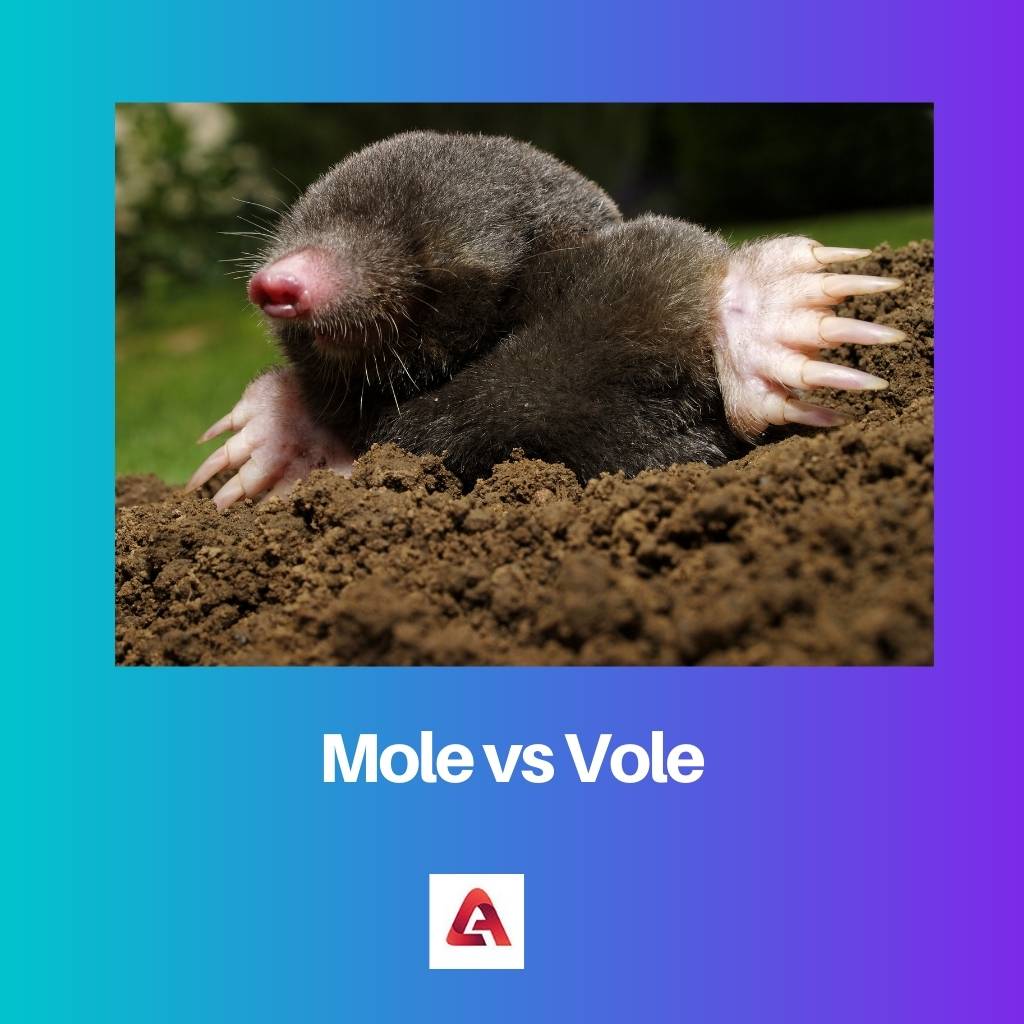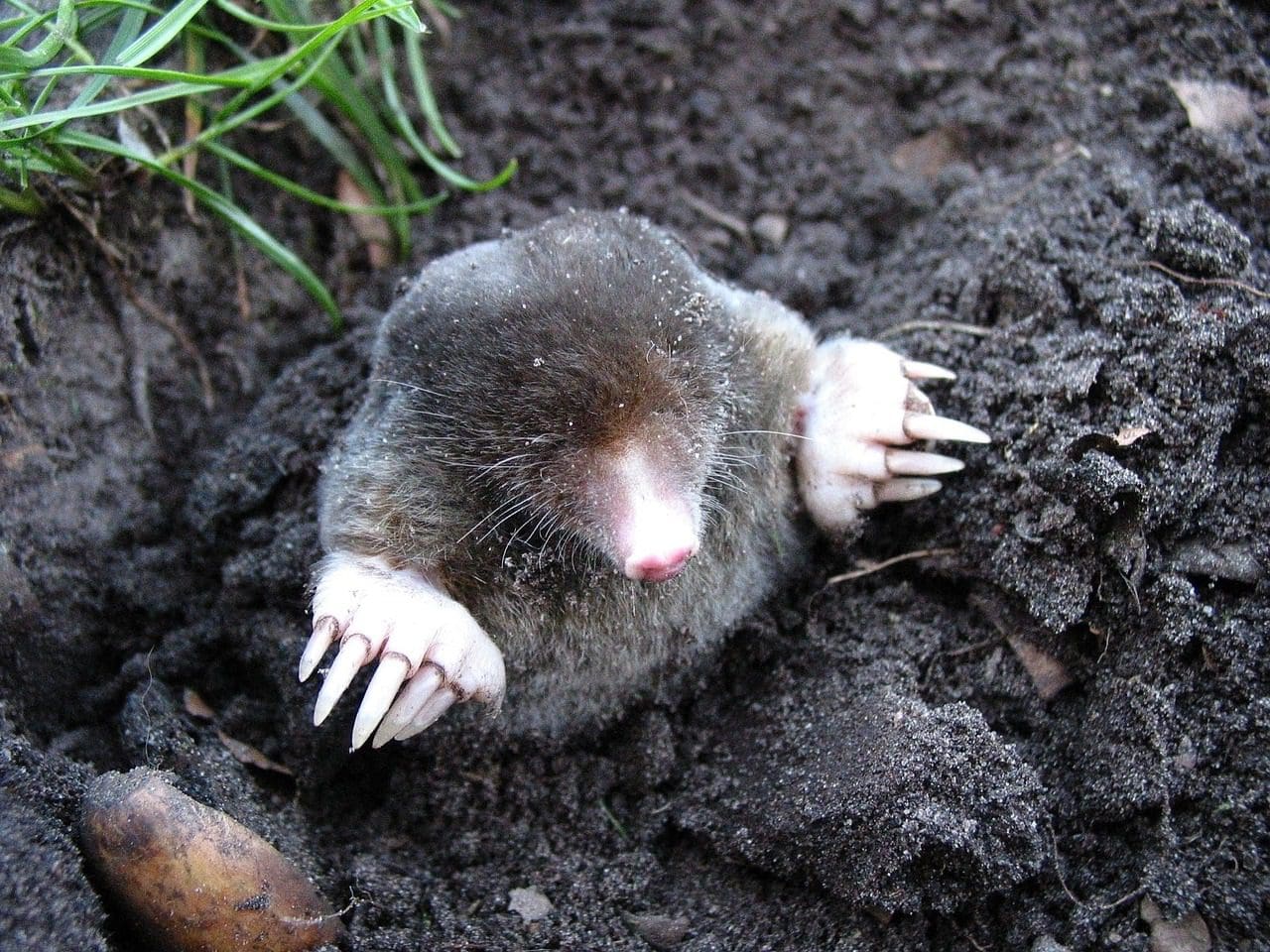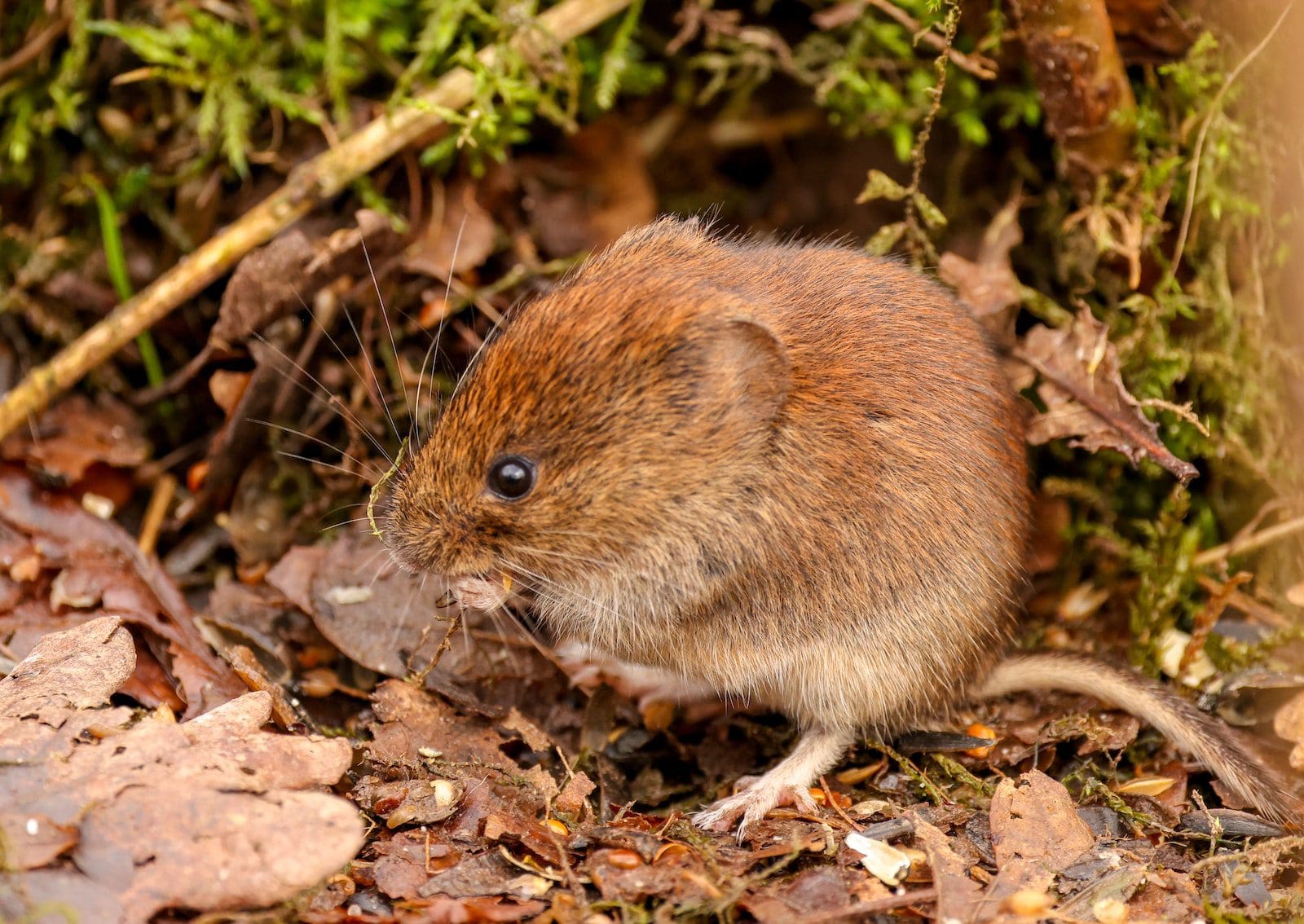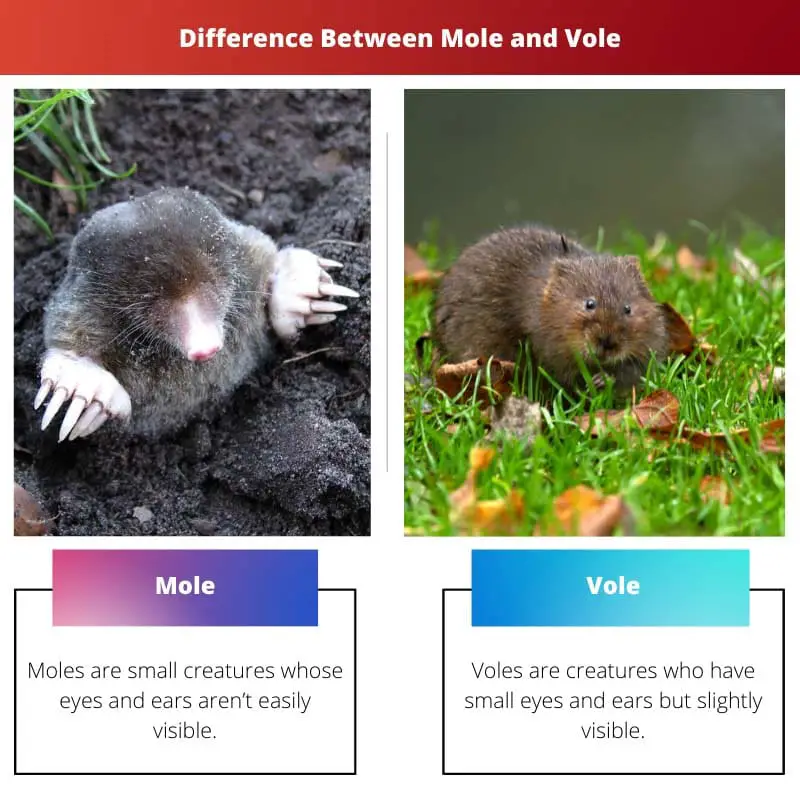Our planet Earth is blessed with millions of species. From aquatic animals to terrestrial organisms, it’s possible to survive among the rest of the planets in the universe.
Key Takeaways
- Moles are small mammals that live underground and feed on insects, while voles are small rodents that live above ground and feed on vegetation.
- Moles have large, paddle-like front feet adapted for digging, while voles have small feet and are adapted for running.
- Moles can cause damage to lawns and gardens by tunnelling and uprooting plants, while voles can cause damage to crops by feeding on roots and stem.
Mole vs Vole
The difference between mole and vole is that moles are not rodents, but voles are rodents. Also, their consumption is different from the voles. Mole is a carnivore that feeds on organisms, insects, grubs, and worms, but voles are herbivores that feed on plants, herbs, shrubs and remaining plants.

Moles are one of the smallest creatures that live and feed on insects, worms, and grubs. They are adapted to a subterranean lifestyle and have cylindrical bodies just like a mouse.
On the other hand, Voles are like moles but differ in eating style and appearance. These are rodents and feed on plants, herbs, and shrubs.
Comparison Table
| Parameters of Comparison | Mole | Vole |
|---|---|---|
| Definition | Moles are small creatures whose eyes and ears aren’t easily visible. | Voles are creatures who have small eyes and ears but slightly visible. |
| Feeding system | Moles feed on insects, worms, grubs. | Voles feed on plants and crops, and meadows. |
| Category | Moles are carnivores and feed on animals. | Voles are herbivores. |
| Burrowing | Moles believe in burrowing and storing food. | Voles don’t burrow and feed instantly on flower buds, bulbs. |
| Reproduction | Moles reproduce slowly and gradually increase their population. | Voles reproduce faster and can triple the family size in a week. |
What is Mole?
Well, millions of creatures are there, and still, we have discovered few of them.
Science and technology have made it possible to see them with microscopes and small magnifiers—every organism helps in maintaining the cycle either this way or the other.
Moles are carnivore creatures that are terrestrial and live on land. They feed on animals, insects, grubs, and worms dug deep into the soil.
These are mostly found in Parts of North America, Europe and Asia. These are considered pests for humans since they destroy the chemicals and worms that help in the growth of crops.
They’re found to be tolerant to higher levels of CO2 than other mammals since their blood cells incorporate special haemoglobin that’s affluent with Oxygen.

What is Vole?
Some species look alike but have different characteristics, like confusing mice with moles and voles. Voles are tiny creatures that run on the land.
Voles aren’t rodents and don’t burrow. Instead, they believe in an on-the-spot feed system. They’re relatives of lemmings and hamsters, and getting confused is okay.
Voles are also considered meadow mice. Around 155 different vole species exist on earth. They grow around 3-8 inches and sometimes depend upon the species.
Since their sexual time is less, they tend to reproduce faster and quicker than other species, and as a result, they can triple the family size within half a month.

Main Differences Between Mole and Vole
- Moles tend to burrow in tunnels, while voles don’t burrow in tunnels. Moles try to store their food, while voles don’t believe in stores for the future.
- Moles reproduce slowly and gradually, while voles reproduce faster and swiftly.
